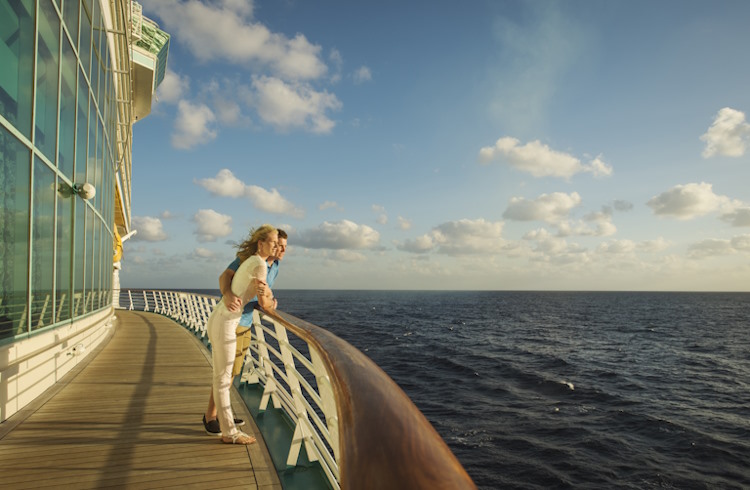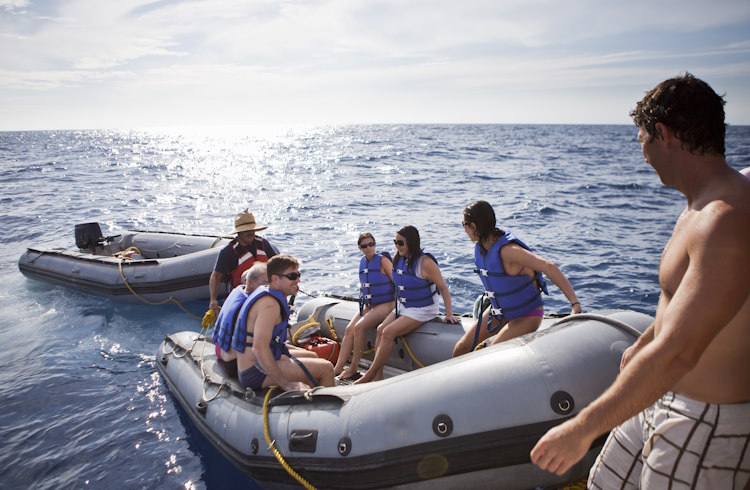Staying Healthy at Sea: How to Avoid Cruise Ship lllness
Getting sick on a cruise can quickly change a trip from fun to failure. Follow these handy tips to stay healthy and enjoy smooth sailing.
 Photo © Getty Images / Erik Isakson
Photo © Getty Images / Erik Isakson
Ocean travel can be a convenient way to reach remote locations, evoking a sense of exploration and adventure and offering unique access to wildlife.
But getting sick at sea doesn’t only limit your ability to enjoy specific activities and sights – being on a ship often means limited access to medical care. Whether traveling on a small boat or a large ship, maintaining healthy habits at sea can help ensure a positive experience.
In 2024, I spent more than 50 days at sea. My experiences included small boats specializing in scuba diving adventures and large commercial cruises. I ended the year crossing the Drake Passage on a mid-size expedition ship designed to navigate polar conditions and sea ice.
These are my essential tips to stay healthy while on a cruise.
- Most common illnesses on a cruise ship
- How to avoid seasickness
- How to avoid other cruise ship illnesses
- Avoiding injury aboard the ship or boat
- Preparing for activities
Most common illnesses on a cruise ship
We’ve all seen dramatic headlines of viruses sweeping through cruise ship populations, confining suffering passengers to their cabins for days on end. The reality is far less sensational. While outbreaks are relatively rare, the proximity of passengers, shared facilities, and constant movement do present an increased risk of contracting illnesses.
According to the CDC Yellow Book for 2024, the most common complaints among cruise ship passengers are seasickness, followed by common respiratory infections. Shared air circulation makes it easy for respiratory illnesses to spread through air-borne droplets or surfaces.
Norovirus and other gastrointestinal ailments are among the other common afflictions for ship passengers. These may be caused by contaminated food or water and crowded areas for food consumption. Symptoms include stomach cramps, vomiting, diarrhea, and fever.
Finally, sunburn and heat exhaustion can quickly lead to symptoms of dehydration, including dizziness, headaches, muscle cramps, nausea, and vomiting.

How to avoid seasickness
Even the most seasoned sailors can feel green when waves get a little too enthusiastic, which is possible on ships and boats of all sizes. While large cruisers are designed with stabilizers to minimize the impact of rough seas, individual sensitivity to motion varies by individual. Ultimately, the best way to limit the chance of seasickness is by being proactive.
Both over-the-counter and prescription-strength solutions are available – consult with your doctor to see what they recommend. Variations of dimenhydrinate (Dramamine) and meclizine, both used to treat nausea, can easily be purchased but may cause drowsiness or dizziness.
Test out any medications before embarking on your ocean voyage to assess personal side effects (and how effective they are, if possible). Be sure to pack any medications, both over-the-counter and prescription, in hand luggage to ensure they make it on the ship with you.
Natural and alternative remedies include ginger-based supplements and chews. More recently, electronic pulse or acupressure wristbands offer a drug-free and reusable alternative.
Don’t wait until you feel queasy to take medications or start other remedies. Once you begin to experience symptoms, minimizing seasickness is much more challenging. Getting fresh air, drinking cool water or ginger tea, and focusing your eyes on the horizon may help.
How to avoid other cruise ship illnesses
When I spoke with the ship doctor, a 15-year veteran of cruise ship routes worldwide, on my most recent voyage, his advice to avoid most illnesses at sea came as no surprise: practicing good handwashing. This means scrubbing all surfaces of your hands for a minimum of 20 seconds – about the time it takes to sing “Happy Birthday” two full times! Be sure to clean between your fingers and under your nails.
In addition to this practice, using hand sanitizer, staying hydrated, and being mindful of food choices, particularly raw foods or items that may have sat out a little too long, can all go a long way in helping you avoid getting sick.
Staying up to date on vaccinations can help prevent severe cases of influenza, COVID-19, and other communicable illnesses. You should also check the CDC website or other official sources to see if travel immunizations are recommended for the places you’re visiting.
Water on board is typically well-filtered, but you should also be mindful when choosing drinks, including ice, while visiting ports of call.
Avoiding injury aboard the ship or boat
One of the most common injuries on a ship or boat is slipping or tripping. So, wearing proper footwear isn’t just a style choice – it’s an important safety move. Save the flip-flops for land-based time and opt for non-slip soles for any on-ship activities. Make use of the hand railings around the vessel and be particularly cautious in areas where there may be water: pools, changing rooms, waterslides, scuba or snorkeling decks.
Injuries often occur in passenger cabins, so secure personal items and doors. Pay attention during the “muster drill,” the mandatory security briefing at the start of any cruise or boat trip. Follow cruise ship safety guidelines to understand how to handle emergencies at sea.

Preparing for activities
According to the 2024 State of the Cruise Industry Report published by the Cruise Lines International Association (CLIA), expedition and exploration itineraries are the industry's fastest-growing segments. Activities include everything from zip lining and kayaking to mountaineering and scuba diving.
So, it’s essential to come prepared with the correct equipment for such activities, or consider renting equipment, if necessary, from reliable sources. Ensure you have proper medical clearance if required, that you have the right certifications for activities such as scuba diving, and that your travel insurance policy covers any activities you may be considering.
No Comments